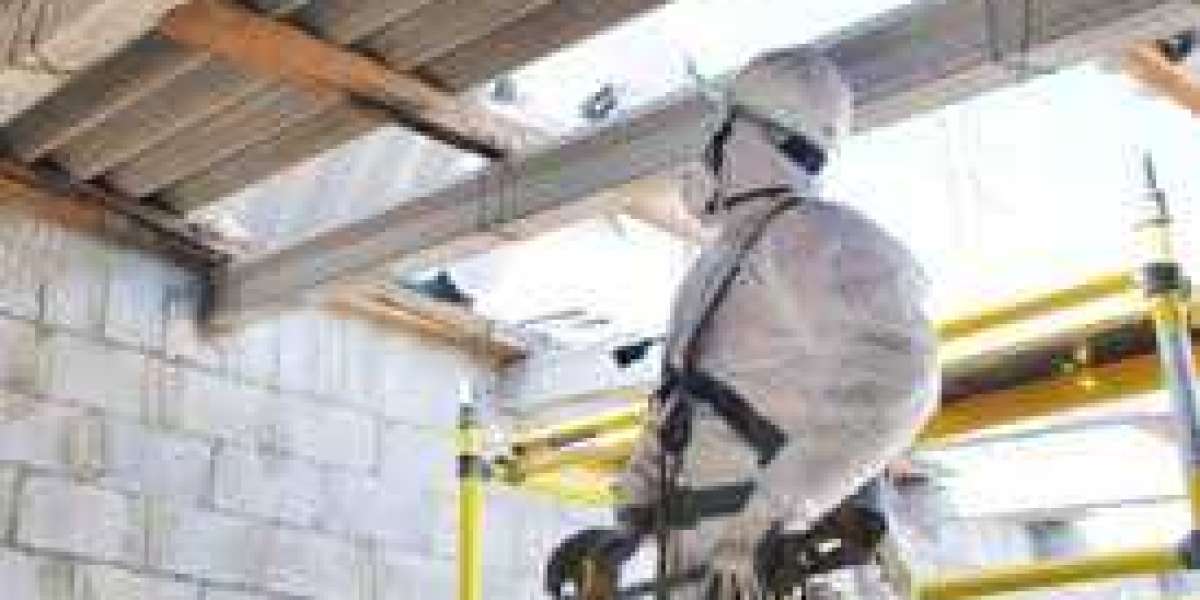When dealing with older buildings, one of the most significant health risks that property owners, contractors, and tenants must be aware of is asbestos. Once hailed for its fire-resistant properties, asbestos is now recognized as a dangerous material that can cause serious health issues if disturbed. That's why Asbestos abatement removal is such a critical process — and why it should only ever be handled by trained professionals.
In this guide, we'll walk you through what asbestos abatement is, why it matters, the methods used, and how to ensure the safe removal of asbestos from any property.
What Is Asbestos?
Asbestos is a naturally occurring mineral once widely used in construction and manufacturing due to its strength, insulating properties, and resistance to heat and corrosion. Common products containing asbestos include:
Insulation materials
Roofing shingles
Ceiling and floor tiles
Cement products
Brake pads
Pipe coverings
However, when asbestos fibers are released into the air — often during renovations, demolition, or natural deterioration — they can be inhaled or ingested, leading to serious diseases like asbestosis, lung cancer, and mesothelioma.
Because of these risks, strict regulations now govern the handling, removal, and disposal of asbestos-containing materials (ACMs).
What Is Asbestos Abatement?
Asbestos abatement refers to the procedures designed to control the release of asbestos fibers from ACMs. It involves either:
Removal: Completely eliminating asbestos-containing materials from a structure.
Encapsulation: Applying a sealant to bind asbestos fibers together or coat the material to prevent fiber release.
Enclosure: Installing a barrier around asbestos materials to prevent fiber release.
Among these methods, asbestos abatement removal is often the most thorough but also the most complex and hazardous process.
Why Asbestos Abatement Removal Is Essential
Health and Safety: Protect occupants and workers from life-threatening diseases.
Legal Compliance: Adhere to strict federal, state, and local asbestos regulations.
Property Value: Increase the resale value and marketability of properties by removing hazardous materials.
Renovation Readiness: Safely prepare old buildings for remodeling or demolition.
Failing to address asbestos risks can lead to severe legal penalties, costly lawsuits, and irreversible health consequences.
The Asbestos Abatement Removal Process
Professional asbestos removal companies follow a detailed and highly regulated process:
1. Inspection and Testing
Certified asbestos inspectors conduct a thorough survey of the property to identify and test suspected ACMs. Samples are sent to accredited laboratories for analysis.
2. Planning and Permits
If asbestos is found, a detailed abatement plan is created. This plan must comply with OSHA, EPA, and local environmental authority regulations. In most areas, permits are required before work can begin.
3. Containment
The work area is sealed off using plastic sheeting and negative air pressure systems to prevent the spread of asbestos fibers. Workers wear specialized protective gear, including respirators.
4. Safe Removal
Materials containing asbestos are carefully wetted to reduce airborne fibers and then removed piece by piece. Removed materials are double-bagged, labeled, and transported to approved hazardous waste facilities.
5. Decontamination and Air Monitoring
After removal, the site undergoes rigorous decontamination. Air samples are collected and analyzed to ensure asbestos fiber levels are within safe limits.
6. Final Inspection and Certification
Once the area is deemed safe, a clearance certificate is issued, documenting that the asbestos hazard has been effectively eliminated.
Key Regulations and Guidelines
Abatement professionals must follow stringent regulations, such as:
OSHA (Occupational Safety and Health Administration) Standards
EPA (Environmental Protection Agency) Asbestos NESHAP (National Emission Standards for Hazardous Air Pollutants)
AHERA (Asbestos Hazard Emergency Response Act) for schools
Local and state-specific regulations
These standards dictate how asbestos is handled, transported, and disposed of, ensuring maximum protection for both workers and the general public.
Why You Should Never Attempt DIY Asbestos Removal
While it might be tempting to save money by handling asbestos on your own, this is extremely dangerous and illegal in many jurisdictions. Improper removal can lead to widespread contamination, massive cleanup costs, and, most importantly, serious health risks for you and your community.
Always hire licensed and insured asbestos abatement professionals. They have the training, equipment, and legal authority to perform the job safely and correctly.
How to Choose an Asbestos Abatement Contractor
When selecting a removal contractor, look for:
Licensing and Certification: Verify that they are accredited to perform asbestos abatement.
Experience: Choose a company with a proven track record in safe, compliant asbestos removal.
References and Reviews: Check customer testimonials and third-party reviews.
Comprehensive Services: Ensure they offer inspection, removal, disposal, and post-removal clearance.
Insurance Coverage: Protect yourself against potential accidents or liabilities.
Conclusion
Asbestos abatement removal is a vital service for maintaining safe, healthy environments in homes, offices, schools, and industrial facilities. Given the serious health risks involved, it's crucial to rely on professional, certified contractors who can ensure that asbestos is safely and legally removed.








